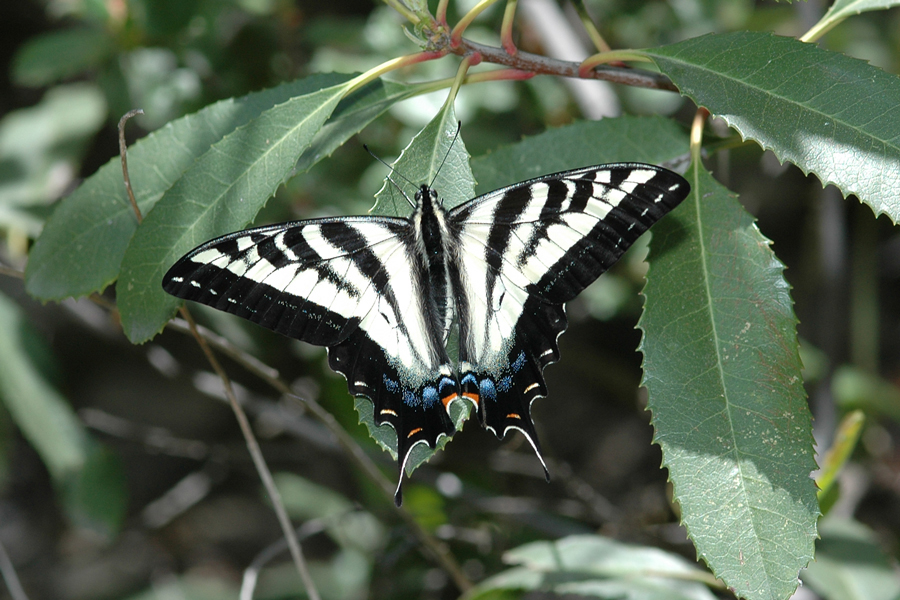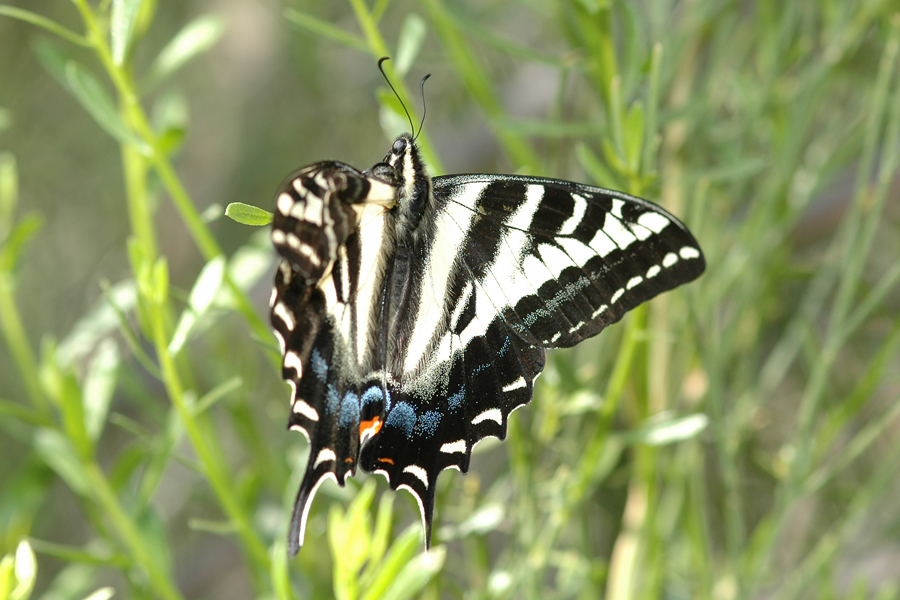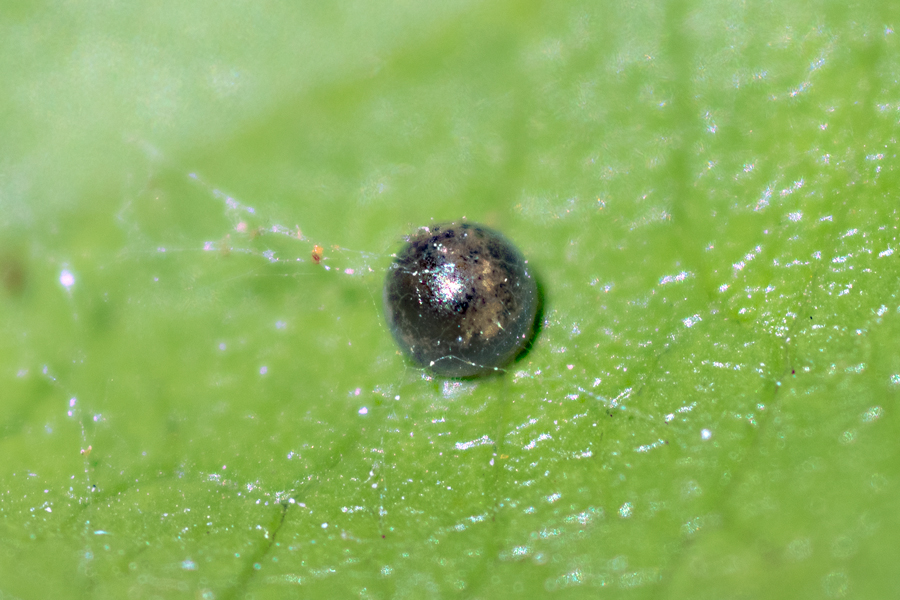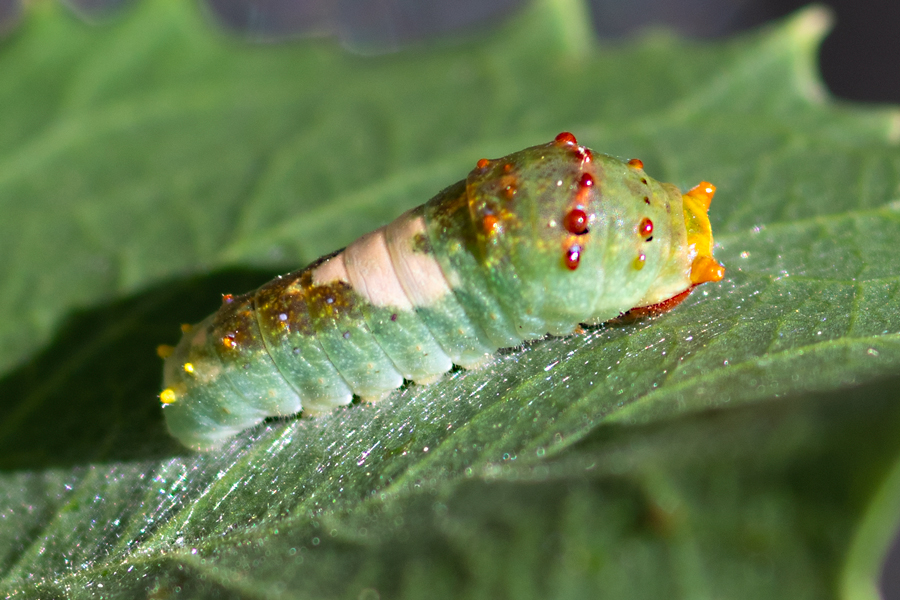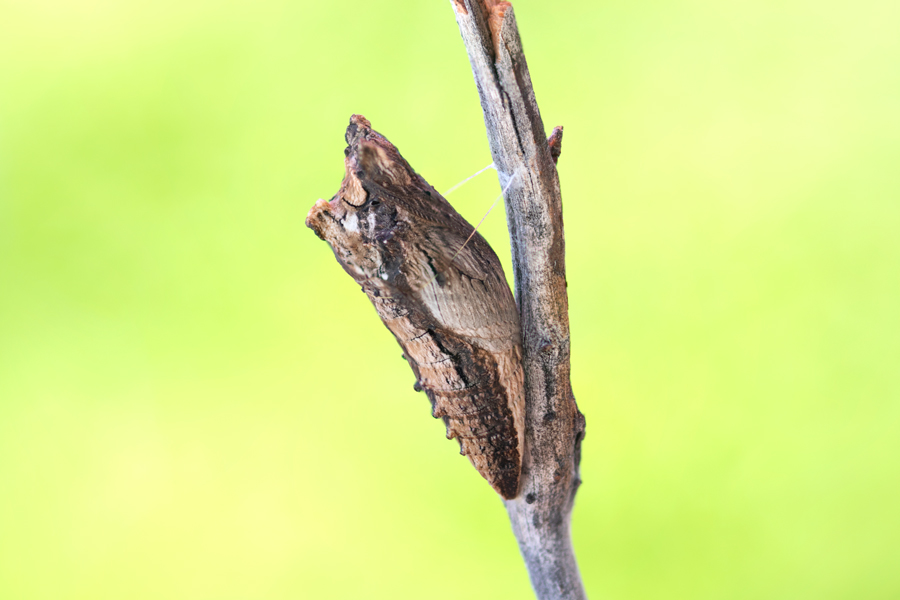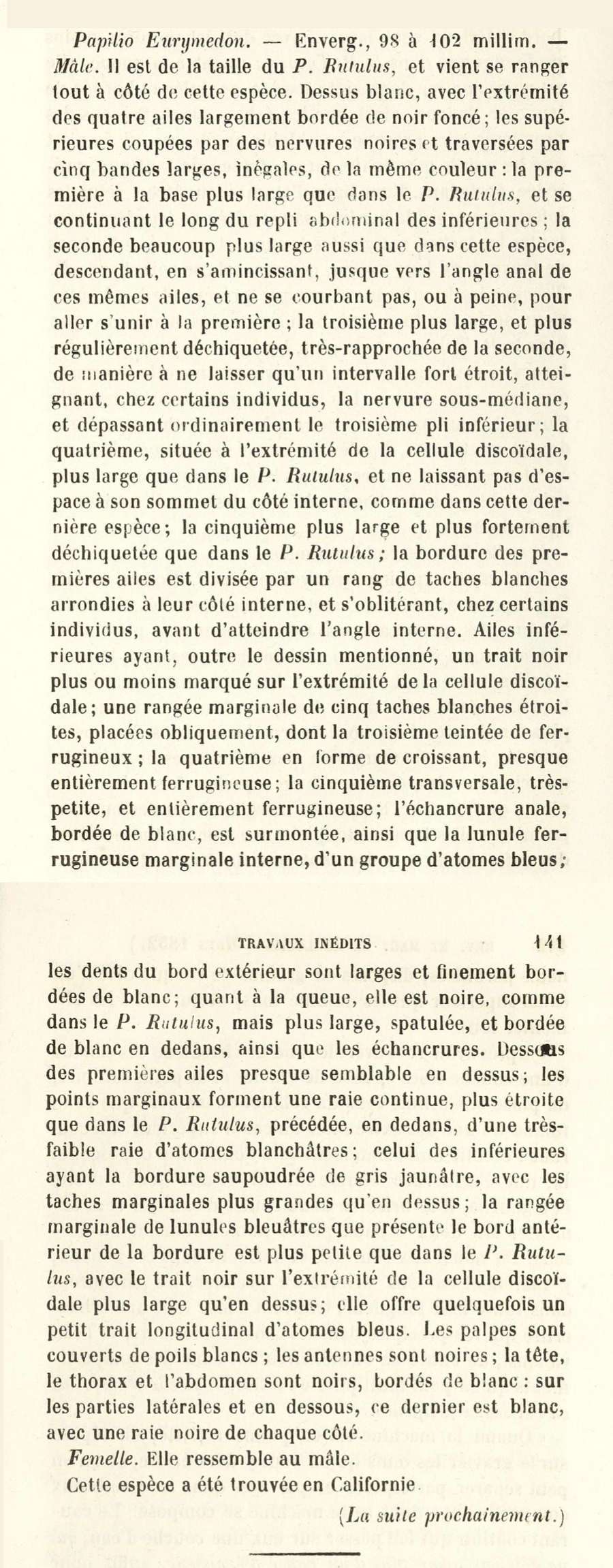Papilio eurymedon
Pale Swallowtail
The pale swallowtail is similar to the western tiger, but usually much closer to white than yellow in ground color, and also less likely to be found in urban or suburban areas. In addition, the pale swallowtail is an avid hilltopper, unlike the western tiger. In some cases, I've found that lighter (or worn) western tigers are easy to confuse with pale swallowtails (especially those that are somewhat yellowish) in places both may fly. If the ground color doesn't help, I've found that the thickness of the black border is a pretty good indicator: it's wider in the pale swallowtail. The tails of eurymedon should be half-turned, though that doesn't always hold up.
Its larval food plants differ very much from P. rutulus, which feeds on various common trees such as sycamores and ash. P. eurymedon uses shrubby members of the Rose and Buckthorn families, such as Prunus ilicifolia, Rhamnus ilicifolia, and some species of ceanothus such as cuneatus. The pale swallowtail is single-brooded, with early larval instars looking like unappetizing bird poop, and the last instars green with false eye-spots. So they are generally similar to the larvae of rutulus, but found on very different host plants.
For the original scientific description, see below and check out the page for rutulus as well for the fuller story. In the 1998 Systematics publication (p.78), Emmel, Emmel, and Mattoon resticted the type locality to the Queen Lily Campground, near Belden in Plumas Co.
